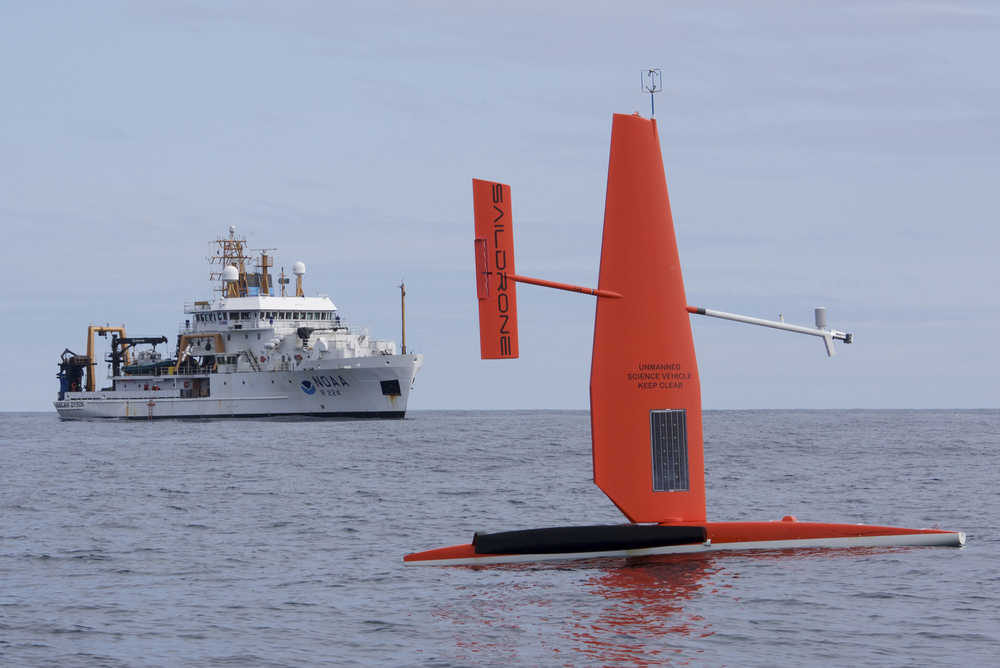ANCHORAGE — Researchers in the Bering Sea off Alaska’s west coast will get help this summer from drones, but not the kind that fly.
The National Oceanic and Atmospheric Administration and private researchers are gathering data on marine mammals, fish and ocean conditions from two “autonomous sailing vessels” built by Saildrone, an Alameda, California, company.
“Think of a 20-foot outrigger canoe with an airplane wing sticking up from the middle,” said Chris Sabine, director of NOAA’s Pacific Marine Environmental Lab, at a press teleconference Friday.
They hold great appeal for researchers because they’re far cheaper to operate than research ships and they can work in dangerous conditions of the North Pacific.
“Imagine the TV series, ‘Deadliest Catch,’ and you can imagine why we would like to remotely gather this information,” Sabine said from Seattle.
Operating by solar and wind power, the vessels can carry 200 pounds of instruments. Two were deployed last week from Dutch Harbor in the Aleutian Islands. Part of their payload will be acoustic gear that can pick up the sounds of North Pacific right whales, one on the most endangered animals on the planet.
Scientists estimate just 30 North Pacific right whales remain in the eastern stock of the population. Their numbers were decimated by whalers starting in the 1800s. The population may have numbered as many as 20,000, but whalers found them to be highly desirable prey — big, slow, and still buoyant after they’re killed.
Finding right whales has been a challenge. The Alaska Fisheries Science Center has sent out research vessels at $25,000 per day trying to find them by sight or acoustic survey, said Doug DeMaster, science director.
“At that cost, we can’t afford to be out there very long,” DeMaster said. “The Saildrone should provide us a much more efficient, cost effective way to at least try to identify areas and times of year where we’re hearing right whales, and then we could reliably design surveys to take advantage of that information.”
Jessica Crance, a marine mammal biologist with the Alaska Fisheries Science Center said the acoustic recorders could pick up the whales’ sounds if they pass within a few miles.
Researchers will use the vessels to gather information on pollock, an important species for commercial fishermen and the main prey of northern fur seals, a species that has declined. Instruments on board also will collect oceanographic data used to track environmental changes.
Saildrone developer Richard Jenkins, who in Dutch Harbor for the May 24 launch, said extreme weather is the main threat to the vessel.
“Big seas and big winds are the real physical hazards but it’s designed to cope with that,” he said. “It’s self-righting. It’s incredibly durable. We’ve had it for 50,000 nautical miles of testing so far.”
The longest mission has been eight months and 10,000 miles.
“We haven’t seen a threshold or limit to how long it can stay out there,” he said. “I think the limit is going to be marine growth, rather than fatigue or failure. You just can’t stop the weed growing on the vehicle.”
The vessels will be picked up in September after sailing back to Dutch Harbor. They can be steered with any web-enabled device.
“I’m controlling the two drones in the Bering Sea right now with my iPhone,” Jenkins said. “I’m in California.”
—
Related stories:
Getting to the ‘root’ of unseen forests

